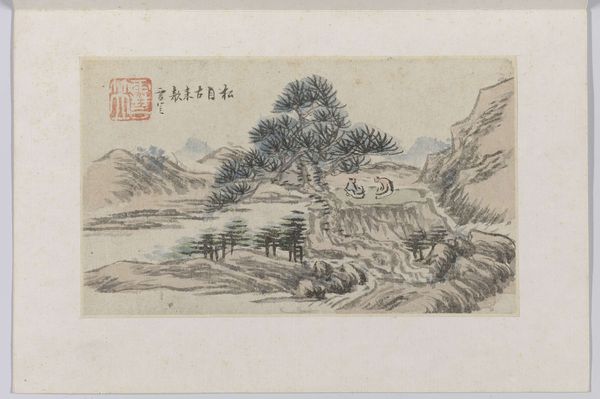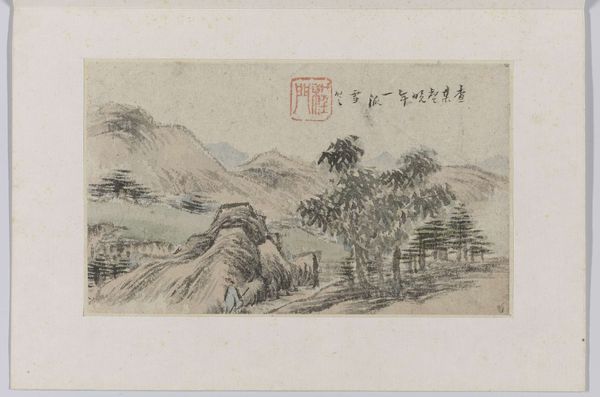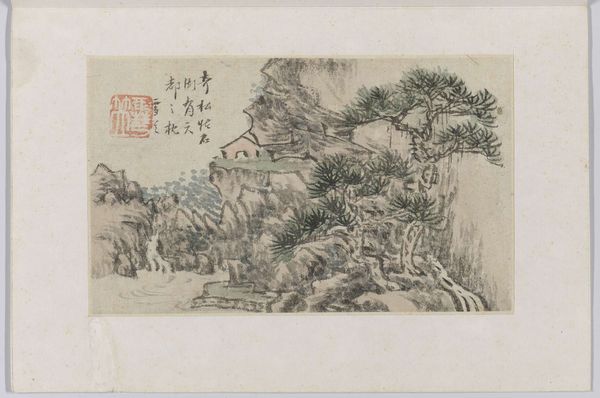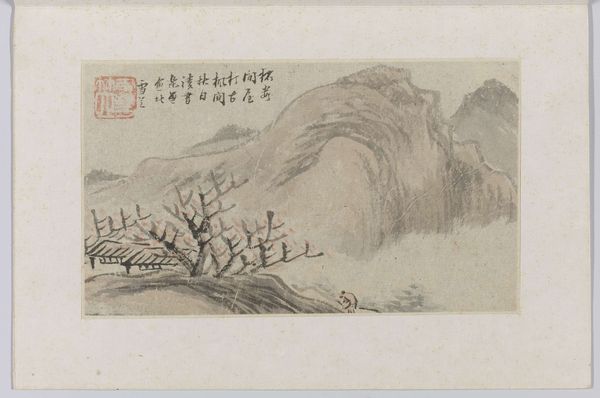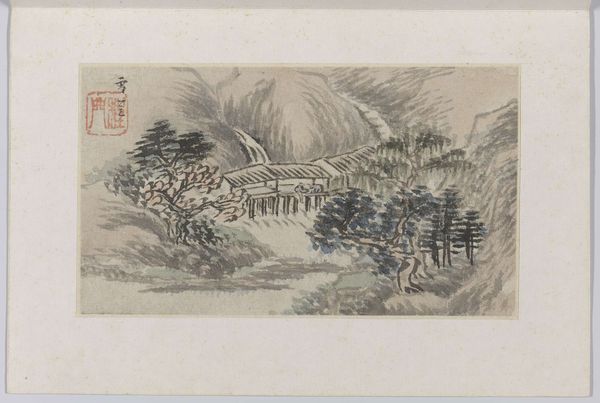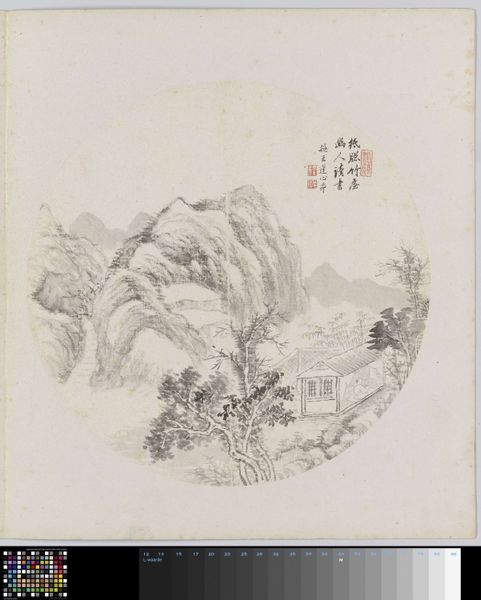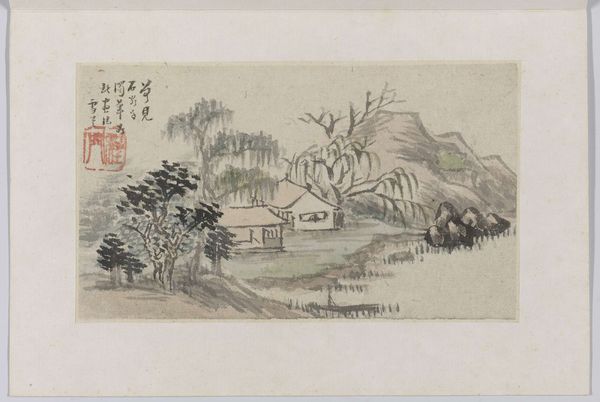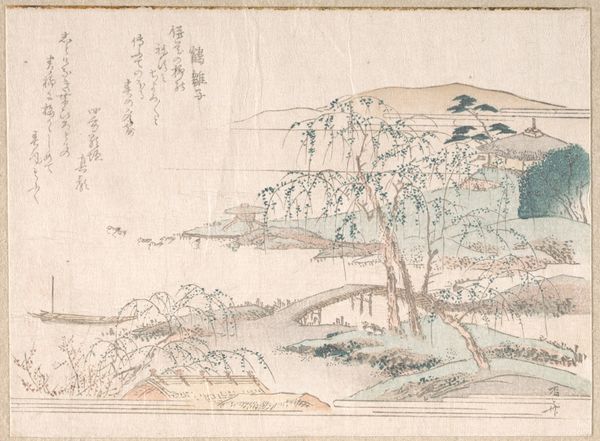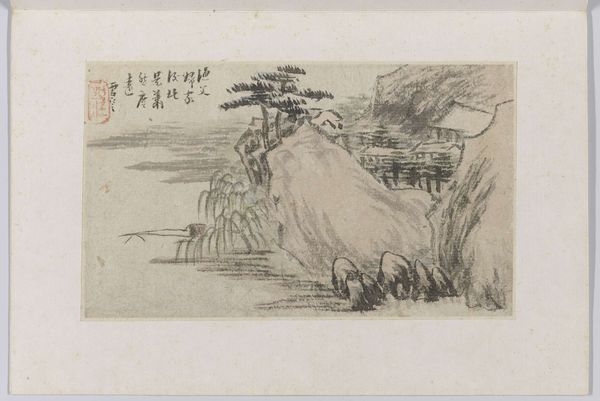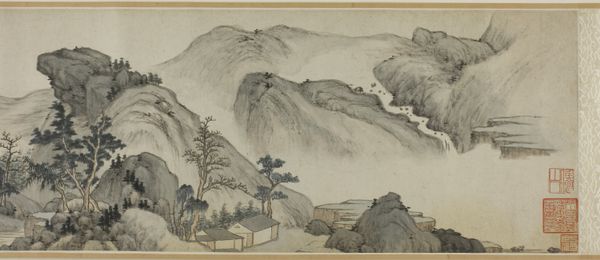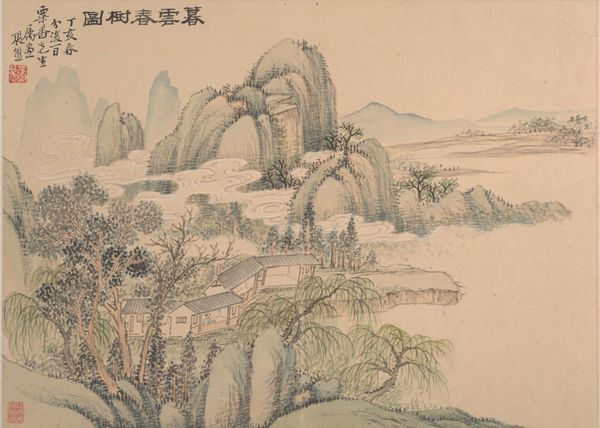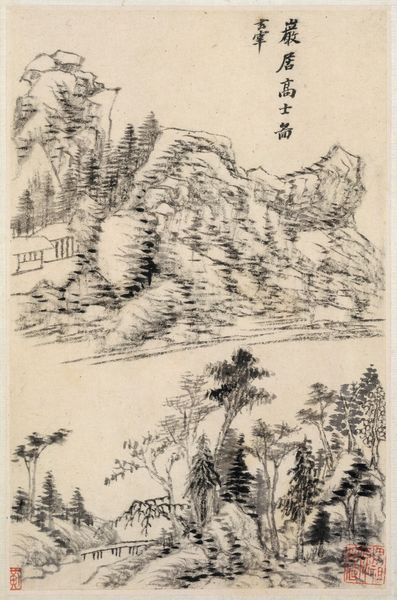
drawing, coloured-pencil, paper, ink
#
drawing
#
coloured-pencil
#
asian-art
#
landscape
#
paper
#
ink
#
coloured pencil
Dimensions: height 24 cm, width 20 cm
Copyright: Rijks Museum: Open Domain
Curator: Here we have "Landschap," a landscape piece by Cheng Men, dating somewhere between 1850 and 1900. The work utilizes ink and colored pencils on paper. Editor: The delicacy of the lines and muted palette give the piece an ephemeral, dreamlike quality. There's a distinct softness to the rendering of the mountains. Curator: Precisely. In traditional Asian art, mountains are sacred, powerful symbols. They can represent obstacles but also the path to enlightenment. The specific kind of mountain imagery and brush technique ties deeply into philosophical traditions. Editor: You see those subtle color choices too, they emphasize the earthiness. The way the pigment sits on the paper implies careful, intentional application – slow labor. I imagine the artist deeply connected with nature. Was this produced for an elite patron or more accessible consumption? Curator: It's plausible that an educated member of the gentry created such art for personal reflection, following practices of landscape painting from the earlier Song and Yuan dynasties, laden with symbolic intent to offer serenity and promote harmony. Notice the recurring themes: balanced asymmetry, layered perspective, and symbolism of the pathway leading somewhere. Editor: Interesting. The path looks rough and rudimentary though. Are we meant to interpret this journey as spiritually significant through these subtle hints? How much of the symbolic potential is really contingent on accessible raw materials? Curator: The path of enlightenment is never smooth. The trees can signify perseverance. It is indeed more complex than mere technique—everything in nature contains deep significance. A mountain is not simply a geological formation; it is a teacher, a source of wisdom. The red seal adds another dimension, representing the artist’s identity but also acting as a visual anchor to this meditative realm. Editor: That interplay between form, matter, and significance feels compelling. It's not just an imitation of the world, but a whole ecosystem of cultural and philosophical resonance, right down to the colored pencil used. Curator: Exactly. It is the blending of artistry and symbolism. A testament to seeing more deeply into the materials around them. Editor: Definitely. I've gained a renewed appreciation for seeing the philosophical impact rooted in production methods and social standing.
Comments
No comments
Be the first to comment and join the conversation on the ultimate creative platform.
